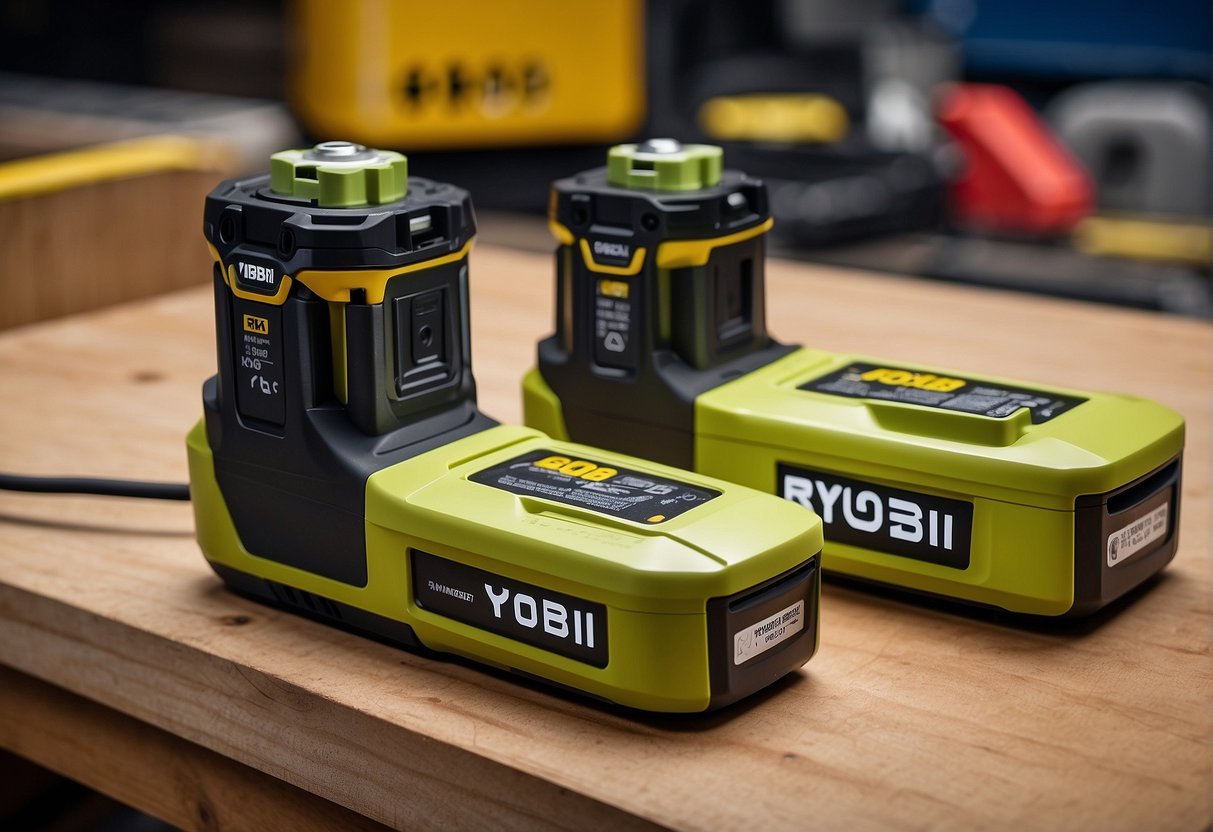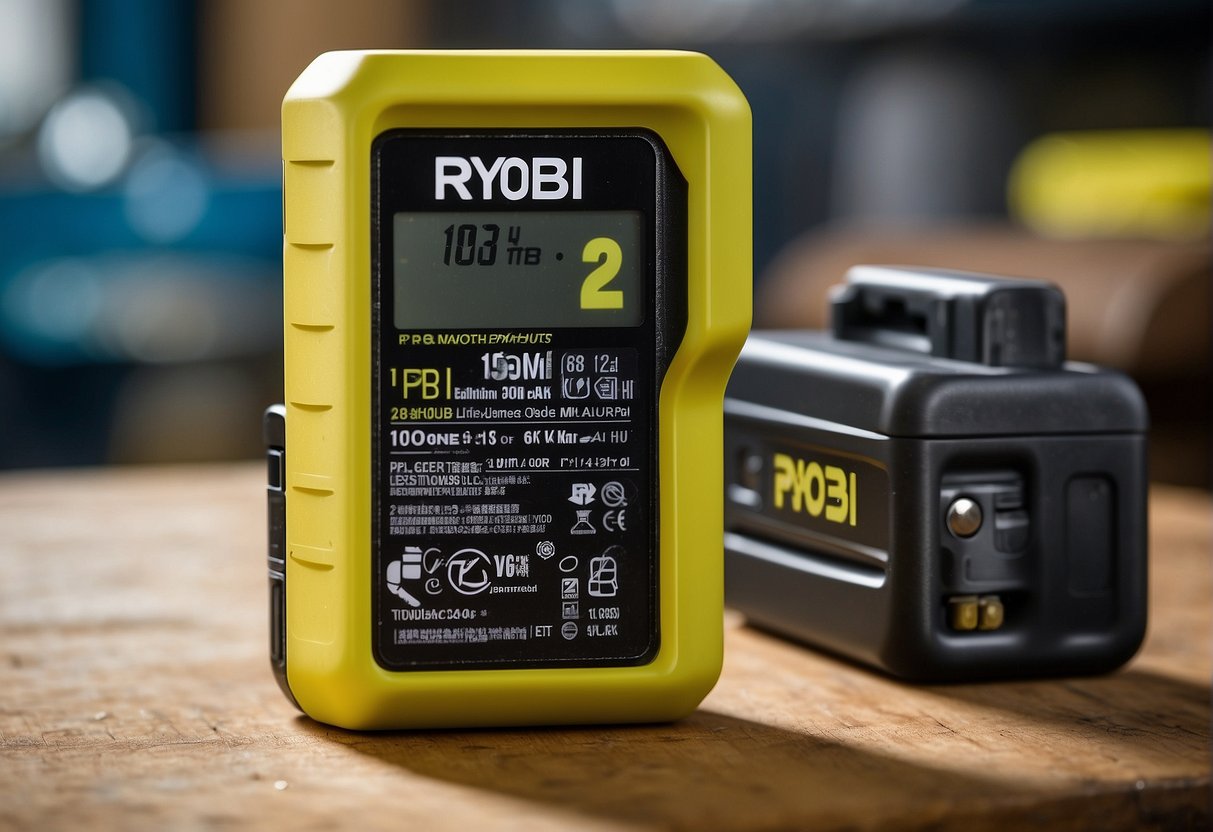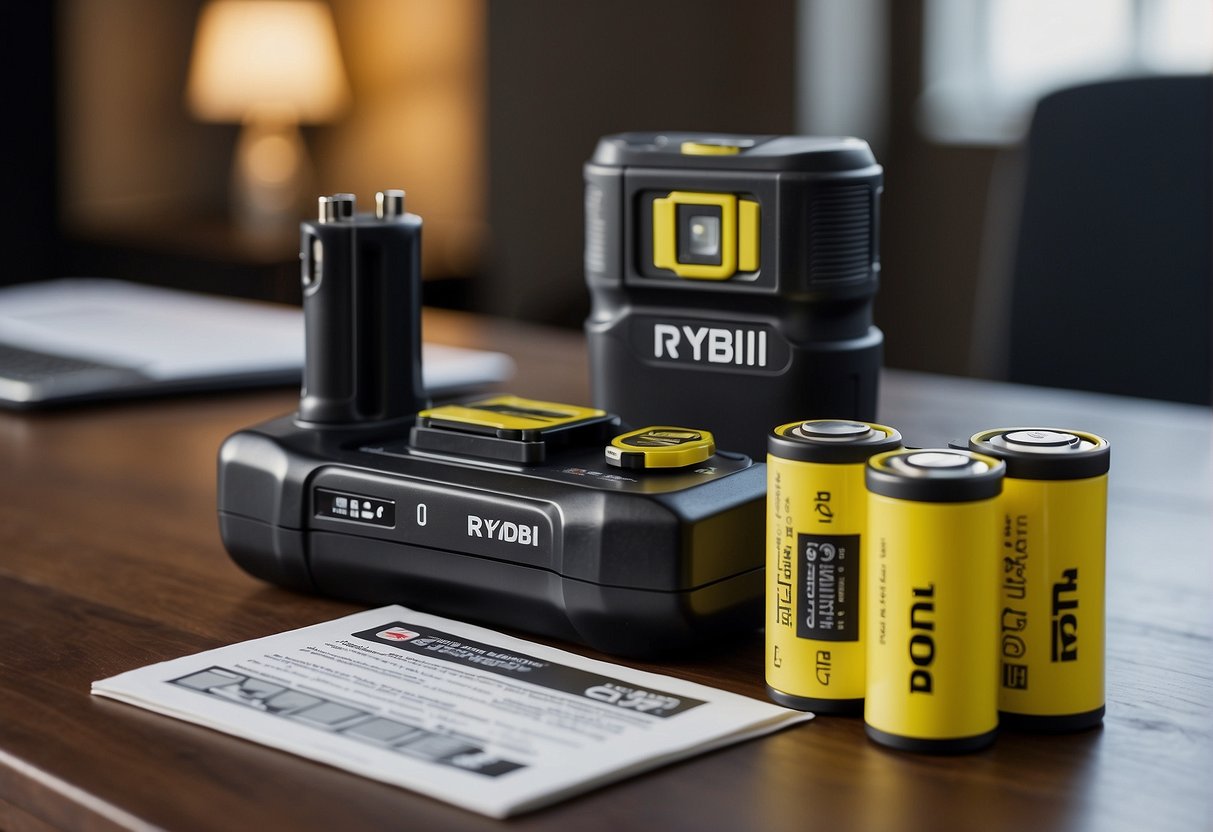Ryobi is a well-known brand in the power tools industry, and their batteries are a popular choice for many DIY enthusiasts and professionals. Two of their most popular batteries are the Ryobi P105 and P108. In this article, I will compare the Ryobi P105 vs P108 batteries to help you decide which one is the best for your needs.

The Ryobi P105 is a lithium-ion battery that provides 18 volts of power. It has a capacity of 1.5 Ah, which means it can power your Ryobi tools for a decent amount of time. On the other hand, the Ryobi P108 is also a lithium-ion battery that provides 18 volts of power, but it has a higher capacity of 4.0 Ah. This means it can power your tools for a much longer time than the P105.
Key Takeaways
- The Ryobi P105 and P108 batteries are both lithium-ion batteries that provide 18 volts of power.
- The P108 has a higher capacity of 4.0 Ah, which means it can power your tools for a much longer time than the P105.
- The P108 is more expensive than the P105, but it offers better performance and value for money.
Overview of Ryobi P105 and P108 Batteries

Battery Technology Comparison
When comparing the Ryobi P105 and P108 batteries, it’s important to note that the P105 is a nickel-cadmium (NiCad) battery, while the P108 is a lithium-ion battery. The P105 offers a lower energy density compared to the P108, resulting in a shorter runtime and overall less efficient performance. On the other hand, the P108 lithium-ion battery provides a higher energy density, longer runtime, and is generally more lightweight than the P105 NiCad battery.
Design and Build Quality
In terms of design and build quality, the P108 lithium-ion battery features a more compact and sleek design, making it easier to handle and store. Additionally, the P108 often includes a built-in fuel gauge, allowing users to easily monitor the remaining battery life. On the other hand, the P105 NiCad battery may lack some of the advanced design features found in the P108, and it generally weighs more due to the nature of its technology.
These differences in battery technology and design can significantly impact the overall performance and user experience when using Ryobi power tools. Understanding these distinctions can help users make informed decisions based on their specific needs and preferences.
Performance and Power
When it comes to Ryobi batteries, the P105 and P108 are two of the most popular options. Both of these batteries are designed to work with Ryobi’s 18V ONE+ system, but they have some key differences that set them apart. In this section, I’ll discuss the performance and power of the P105 and P108 batteries.
Voltage and Capacity
One of the biggest differences between the P105 and P108 batteries is their voltage and capacity. The P105 is a 18V NiCad battery with a capacity of 1.5 Ah, while the P108 is a 18V lithium-ion battery with a capacity of 4.0 Ah. This means that the P108 has more power and can hold a charge for longer periods of time.
Runtime and Efficiency
Another important factor to consider when comparing the P105 and P108 is their runtime and efficiency. Because the P108 has a higher capacity, it can run for longer periods of time than the P105. Additionally, the P108 has a fuel gauge that allows you to easily monitor the battery’s charge level. This can help you avoid running out of battery power in the middle of a job.
In terms of efficiency, the P108 is also the clear winner. Lithium-ion batteries are generally more efficient than NiCad batteries, which means that the P108 can provide more power with less energy. This can help you get more done with less battery power, saving you time and money in the long run.
Overall, if you’re looking for a battery that can provide maximum performance and power, the P108 is the better option. It has a higher capacity, longer runtime, and better efficiency than the P105. However, if you’re on a tight budget or don’t need as much power, the P105 is still a solid choice.
Durability and Longevity

When it comes to power tool batteries, durability and longevity are crucial factors to consider. In this section, I will compare the lifespan of Ryobi P105 and P108 batteries and how they perform in extreme weather conditions.
Lifespan Comparison
The Ryobi P105 and P108 batteries are both designed to provide fade-free power and long-lasting performance. However, the P108 battery has a higher capacity than the P105, which means it can provide more power and run time. The P108 has a capacity of 4.0 Ah, while the P105 has a capacity of 1.5 Ah. This means that the P108 can last up to three times longer than the P105, depending on the tool and usage.
In terms of lifespan, both batteries are designed to last for years with proper maintenance. However, the P108 has a longer lifespan than the P105 due to its higher capacity and advanced Lithium+ technology. The Lithium+ technology provides fade-free power and ensures that the battery retains its charge even after long periods of storage.
Weather and Usage Impact
Both the P105 and P108 batteries are designed to withstand extreme weather conditions and heavy usage. However, the P108 battery has an advantage over the P105 in this regard. The P108 is weather-resistant, which means it can withstand extreme temperatures, humidity, and rain. This makes it ideal for outdoor use and heavy-duty applications.
On the other hand, the P105 battery is not weather-resistant, which means it can be affected by extreme weather conditions. It is also not recommended for heavy-duty applications as it may not provide enough power and run time.
In conclusion, the Ryobi P108 battery is more durable and long-lasting than the P105 battery, thanks to its higher capacity and advanced Lithium+ technology. It is also weather-resistant, which makes it ideal for outdoor use and heavy-duty applications. However, both batteries are designed to provide fade-free power and long-lasting performance with proper maintenance.
Charging and Maintenance
Charger Compatibility
When it comes to charging Ryobi batteries, it is important to use the correct charger to avoid damaging the battery or reducing its lifespan. Both the P105 and P108 batteries are compatible with the Ryobi ONE+ charger, which is designed to charge all Ryobi 18V ONE+ batteries, including the Lithium-ion and NiCad batteries.
However, it is important to note that the charging time for each battery may vary depending on the charger used. For instance, the P108 battery may take longer to charge compared to the P105 battery due to its higher capacity. Therefore, it is recommended to use the Ryobi ONE+ charger to ensure optimal charging time and battery performance.
Battery Maintenance Tips
To ensure the longevity and optimal performance of your Ryobi batteries, it is important to maintain them properly. Here are some tips to help you maintain your Ryobi P105 and P108 batteries:
- Store your batteries in a cool, dry place away from direct sunlight and heat sources.
- Do not expose the batteries to water or any other liquids.
- Avoid dropping or puncturing the batteries as this may damage the cells and reduce their lifespan.
- Charge your batteries before storing them for extended periods to maintain their charge level.
- Use the correct charger for your battery to ensure optimal charging time and battery performance.
- Do not overcharge or discharge your batteries as this may damage the cells and reduce their lifespan. It is recommended to charge your batteries when they reach 25% capacity to avoid over-discharging.
- If you notice any signs of damage or reduced performance, such as reduced runtime or slower charging time, replace the battery immediately.
By following these simple maintenance tips, you can ensure the longevity and optimal performance of your Ryobi P105 and P108 batteries. Remember to always prioritize safety when handling batteries and chargers to avoid accidents and injuries.
Price and Value
Cost Analysis
When it comes to comparing the Ryobi P105 and P108 batteries, one of the most important factors to consider is the price. The P105 is the more affordable option, priced at around $40, while the P108 is more expensive, costing around $100. However, it is important to keep in mind that the P108 has a higher capacity and longer runtime than the P105, which can make it a better value in the long run.
In terms of bundle deals, both batteries can be purchased as part of a kit with a charger and other tools. These bundles can offer greater value for those looking to expand their Ryobi tool collection.
Value for Money
When it comes to value for money, it is important to consider the overall performance and longevity of the batteries. The P108 has a higher capacity and longer runtime than the P105, which can make it a better investment in the long run. Additionally, the P108 features a fuel gauge, allowing users to easily monitor the battery life.
Reviews of both batteries have been generally positive, with users praising their compatibility with a wide range of Ryobi tools and their overall performance. However, it is important to keep in mind that individual experiences may vary and that it is important to choose the battery that best fits your specific needs and budget.
Frequently Asked Questions

What are the main differences between the P105 and P108 Ryobi batteries?
The P105 and P108 are both 18V Ryobi batteries, but there are some differences between them. The P105 is a 2.5Ah battery, while the P108 is a 4.0Ah battery. The P108 is also a Lithium+ battery, which means it has advanced electronics that provide more efficient power management and longer battery life. The P105, on the other hand, is a Lithium-Ion battery. The P108 is also slightly heavier than the P105, weighing in at 1.7 pounds compared to the P105’s 1.4 pounds.
Can you use the P108 battery with tools designed for the P105 battery?
Yes, you can use the P108 battery with tools designed for the P105 battery. Both batteries are 18V, so they are compatible with the same tools. However, you should keep in mind that the P108 is larger and heavier than the P105, so it may be less comfortable to use with certain tools.
How do the capacities of Ryobi P105 and P108 batteries compare?
The P108 has a higher capacity than the P105. The P108 is a 4.0Ah battery, which means it can provide more power and run for longer than the P105, which is a 2.5Ah battery. This means that the P108 is better suited for heavy-duty tools and tasks that require more power and longer run times.
What are the benefits of using a high capacity Ryobi P108 battery over the P105?
The main benefit of using a high capacity Ryobi P108 battery over the P105 is that it provides more power and longer run times. This makes it ideal for heavy-duty tools and tasks that require more power and longer run times. Additionally, the P108 is a Lithium+ battery, which means it has advanced electronics that provide more efficient power management and longer battery life.
Are there any compatibility issues between different Ryobi 18V batteries and tools?
Ryobi 18V batteries are generally compatible with all Ryobi 18V tools. However, you should always check the compatibility of your battery and tool before using them together. Additionally, you should keep in mind that different batteries may have different capacities and run times, so you should choose the battery that is best suited for your tool and task.
What should I consider when choosing between the Ryobi P105 and P108 batteries for my power tools?
When choosing between the Ryobi P105 and P108 batteries for your power tools, you should consider the capacity and run time that you need for your tool and task. The P108 has a higher capacity and longer run time than the P105, so it is better suited for heavy-duty tools and tasks that require more power and longer run times. However, the P108 is also larger and heavier than the P105, so it may be less comfortable to use with certain tools.

Hi, I’m Sal Muller of Tooltrip.com. My DIY experience led me to understand essential power tools for home projects. Tooltrip.com guides enthusiasts and professionals in choosing right tools for any job. I provide concise top tool reviews for easier, efficient DIY.

